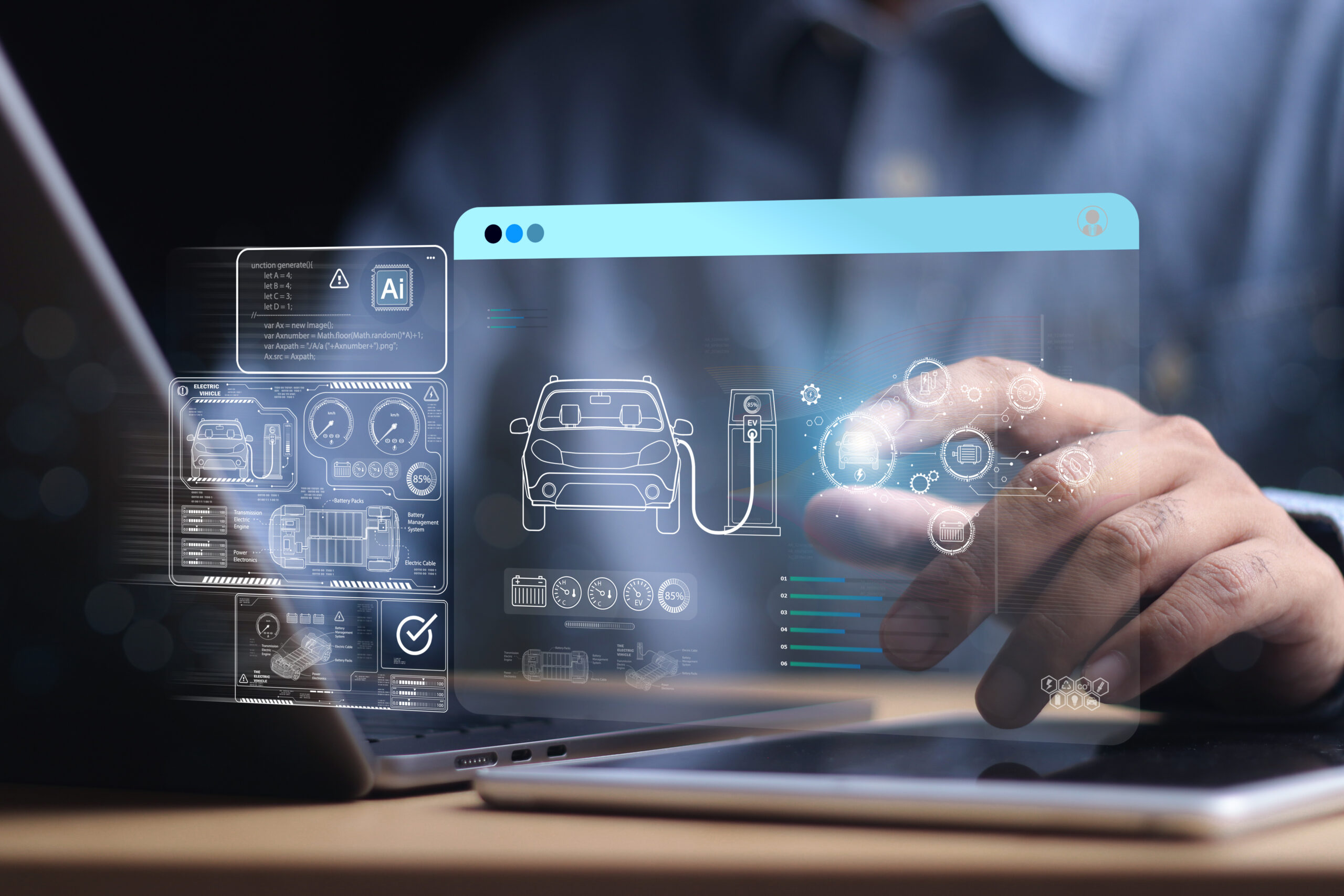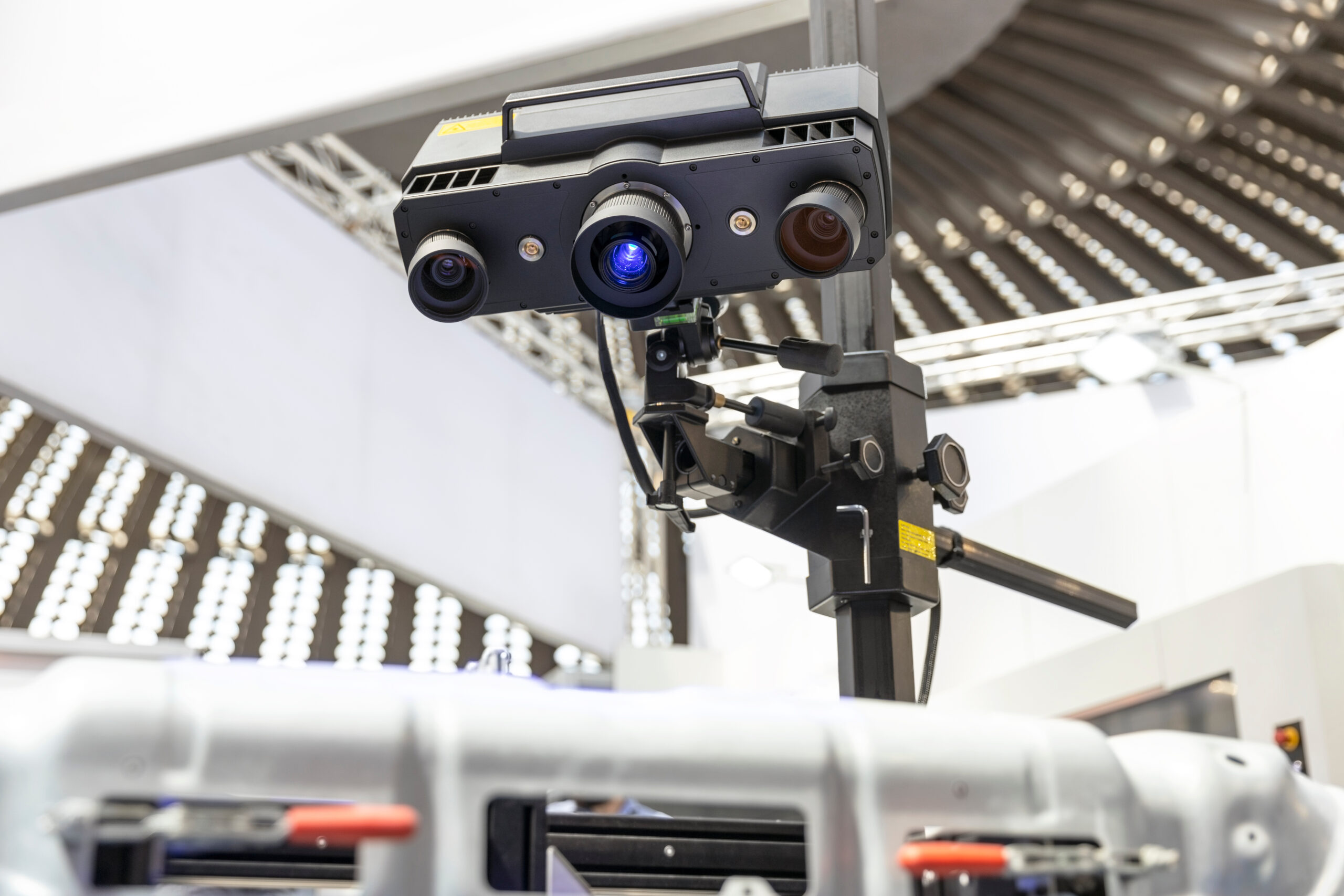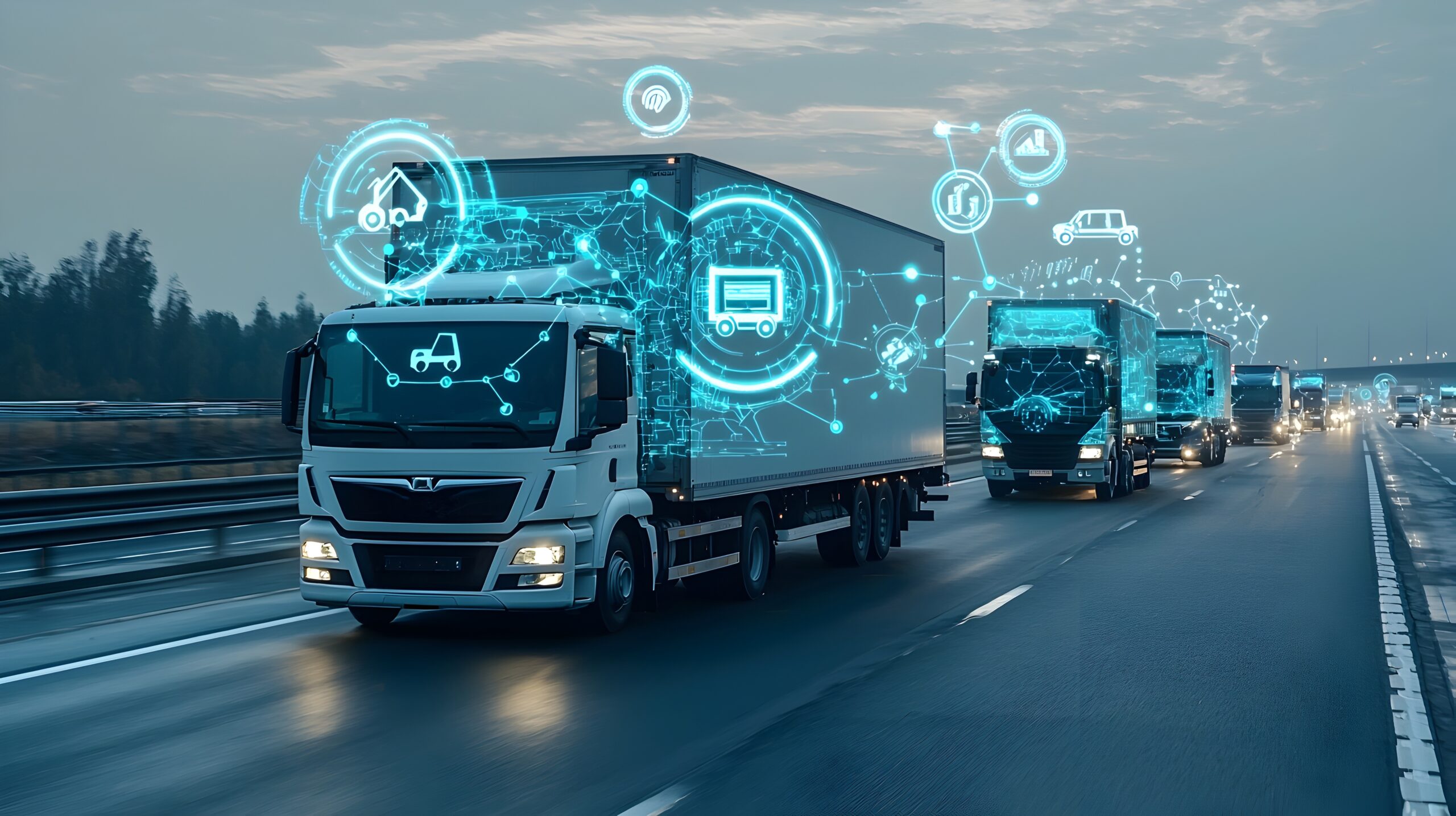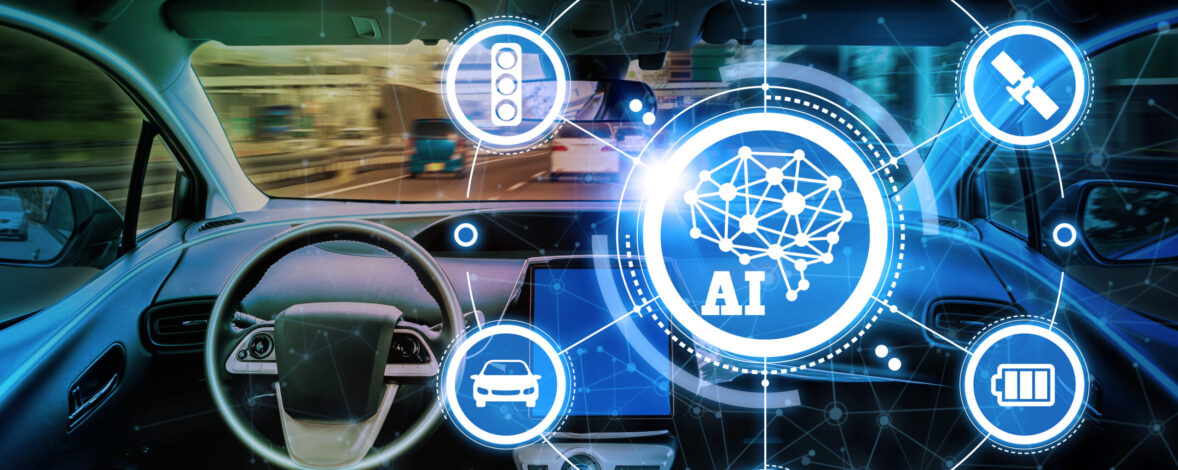What is AI in the automotive industry?
The automotive industry is undergoing a period of incredible transformation. The deployment of new technologies into vehicles include increased software, electric vehicles, and new sensors. But perhaps the most important change in vehicles is the deployment of artificial intelligence. Vehicle AI can enable car companies to unlock new capabilities and improvements that span across the vehicle. Today when artificial intelligence is mentioned, most of the conversation centers around improving advanced driver assistance systems to create autonomous vehicles or self driving cars. While this remains important, this is only one of the many opportunities for the automotive industry.
In this blog post, we discuss the opportunities and challenges of deploying artificial intelligence in vehicles and the wide range of benefits of AI in the automotive industry. Automotive companies are embracing these innovations and they will continue to be more widespread in the years ahead.
Applications of AI in the Automotive Industry Across the Vehicle Lifecycle
How can AI be used in vehicles?
AI in the automotive industry spans across the lifecycle from early in design, through operation, safety, and ongoing tuning to optimize the entire car making process.
Overview: Types of Vehicle AI
Let’s consider some of these important applications across the vehicle lifecycle, starting with the design and manufacturing process, into vehicle operation and service, and finishing with ADAS and autonomous vehicles.
- Vehicle Design and Simulation
- Automotive manufacturing and quality control
- Vehicle Operation and Service
- Driving Assistance and Automation
Vehicle Design
Generative AI and Applied AI in Vehicle Design and Engineering

Generative AI is changing the design process for every type of product and the automotive industry is no different. AI vehicle solutions that benefit innovations in vehicle design are being employed to speed the design cycle, improve efficiency, and improve vehicle performance.
AI algorithms are optimizing all these use cases and we are just at the beginning of how AI technology will benefit vehicle design. Here are some examples but this list is only the beginning of the opportunity:
- Tire design
- Aerodynamics
- Battery chemistry development
- Battery management systems (BMS)
Let’s consider just a few of these examples of how AI systems can benefit car companies in design:
Tire design and Vehicle Aerodynamics
Optimizing tread and materials with AI

Tire technologies are benefiting from advanced optimization to improve traction, wear, and accelerate materials science research. Tire wear patterns are very advanced, and continue to improve. Using AI design techniques can enhance conventional approaches to identifying patterns that can deliver effective traction across a range of road conditions.
Aerodynamics
Tuning efficiency with AI-enhanced Computational fluid dynamics

Aerodynamic efficiency can be improved with simulated wind tunnels and reduce fuel or energy costs. Computational aerodynamics and simulated wind tunnels have been around a while, but using new techniques with the incorporation of AI can find new opportunities to streamline vehicles through the air.
Battery Chemistry Development
Optimizing and tuning material science with AI
Battery and propulsion technologies are seeing incredible advances all the time. One notable application of artificial intelligence is the rapid evolution of electric vehicles and battery technology. It might seem that vehicle batteries are mature technology but this remains an area of active research. Improvements in battery technology and battery chemistry continue to be achieved and artificial intelligence is supporting this research. Electric cars and even hybrid cars will continue to demand ongoing innovation in batteries as we look to improve range, reduce cost, and continue the push for battery safety.
Battery Management Systems (BMS)
AI-powered ongoing enhancements to battery tuning after production

It is equally exciting that once batteries are designed, innovations in battery management systems, powered by advanced analytics and artificial intelligence are offering ongoing improvements. Using both conventional algorithms and AI algorithms, BMS systems can analyze battery performance to identify weak cells. This allows the automotive industry to improve vehicle safety by having the charging system avoid over-stressing weak cells. It also can lead to cost savings, by enabling lower cost production processes to nonetheless deliver high reliability battery packs that make vehicles safer. Interestingly another of the key benefits of advanced BMS is improved charging time and battery longevity by balancing load on packs and managing the charge to reduce strain.
Automotive manufacturing and quality control
AI Applications in Automotive Manufacturing and Quality Control

It is not only upfront design that benefits from data analysis, but the manufacturing flow itself can benefit from AI technology . Let’s consider a few specific areas being deployed by automotive leaders.
- AI-driven automation and manufacturing
- AI-enhanced manufacturing quality control
- AI-optimized supply chain management
Generative AI in vehicle automation and manufacturing
Optimizing manufacturing process and tuning throughput with AI
Manufacturing vehicles efficiently is an both an art and a science. Talented specialists design manufacturing flows and the related supply chain management (which we’ll talk about in a moment). Achieiving an optimized flow that balances throughput while ensuring quality is critical to ensuring profitability. AI tools can help to analyze bottlenecks in manufacturing and detect patterns that conventional algorithms may not see.
Manufacturing Quality Control
Computer vision and AI for enhanced quality

Quality is one important part of this process. The automotive industry can leverage machine learning, especially around computer vision to improve quality control in automotive manufacturing. Classic assembly line inspection by humans has been around for a hundred years, but vision systems based on machine learning are far more capable of detecting quality problems invisible to the human eye, and more efficient at the same time. By providing deeper inspection of components throughout the production processes compared to what was possible in the past, total vehicle quality can be improved. The combination of a system comprising slightly higher quality in many different component results in an overall significant increase in net quality.
Supply chain management
Reducing cost and tuning inventory with AI

Supply chain management is an equally important area ripe for optimization. The automotive industry is particularly sensitive to inventory cost savings to ensure its factories can deliver just-in-time manufacturing but without excessive inventory buildup, which can impact profit margins. Supply chain management promises to offer superior analytics to guide the procurement process. Deep learning can analyze data about the inventory, upcoming and expected product mix, and other factors like anticipated vehicle demand and seasonality to deliver better overall supply chain optimization.
Vehicle operation and service
AI-enhanced driving experience and predictive vehicle maintenance: How do smart cars use AI?

Once a vehicle is put into operation, there are many opportunities for generative AI and other AI-powered systems to add value to OEMs, suppliers, dealers and drivers alike. The reality is these areas are relatively new and only very few OEMs are deploying these capabilities today. The increased adoption of connected cars and increased prevalence of digital sensor data in more systems means these capabilities of automotive artificial intelligence are likely to grow in popularity in the years ahead. Here are four major categories to consider:
- Failure analysis and AI-powered predictive maintenance
- In-car personalization
- AI-enhanced fleet management
- Smart Cities and V2X
Failure analysis and AI-powered Predictive maintenance
Detecting problems in advance with AI analytics
Today, vehicle service and repair is largely reactive in the automotive industry: something breaks, and the driver brings the vehicle in for service. Some systems today will cause a malfunction indicator light (MIL) commonly referred to as the dreaded “Check Engine” light to indicate there is some problem, but most of those systems only activate once a failure has already occurred. The opportunity is to proactively monitor more vehicle systems to deliver predictive maintenance in advance of the failure. Predictive maintenance offers the driver a better experience and enables the OEM and the dealer service department to deliver an impressive experience, building customer loyalty and increasing driver safety. Commercial vehicles are more attuned to this capability as downtime in goods transportation has a direct financial cost, but this is not widespread in private vehicles As AI technology continues to encompass more systems, predictive maintenance is one of the opportunities that remains an untapped opportunity.
Personalized in-car experiences
AI to detect and respond to user preferences

Vehicle personalization is an exciting area of interest as drivers look for vehicles to be more customizable, delivering a customer experience similar to what they have with their smartphones. Some leaders in the automotive industry are deploying capabilities for drivers to tailor their vehicles much more than just their seat position and mirrors. AI in the automotive industry offers the potential to do even more, where the vehicle automatically detects driver behavior and proactively suggests customizations in different situations. AI-powered algorithms like this can offer a compelling customer experience for drivers and also provide valuable feedback on vehicle usage to OEMs for future vehicle planning.
Enhanced Fleet Management
AI in Fleet Optimization

Vehicle fleets of many types are increasingly becoming connected vehicles, which offers the promise to deliver better overall fleet management to the automotive industry. For delivery fleets comprising commercial vehicles, fleet management is widely deployed, though today many of these systems are based on conventional algorithms. Over the last two years, we have seen an explosion of AI systems being applied to these applications, where fleet companies are recognizing that certain kinds of fleet management, route planning and optimization can be superior with AI technology. We expect these same kinds of capabilities to extend to other types of fleets like rental car fleets and other special purpose fleets. AI can also help monitor special kinds of payloads like cold chain where special handling is required to ensure a successful mission. Similarly, autonomous vehicle technology (which we discuss more later) is already being used in off-road applications like construction, mining and farming to make those fleets safer and more efficient.
Smart Cities and Vehicle-to-Vehicle/Vehicle-to-Infrastructure
AI in Connected Cars and Smart Transportation Infrastructure

The promise of more holistic communication between vehicles and between vehicles to the surrounding infrastructure is today in its infancy. The opportunity to improve traffic flow and have vehicles communicate with other vehicles can provide better safety, driver assistance, and superior traffic for all drivers. In the US, recent legislative changes have finally approved new usage of cellular spectrum for V2X applications. AI-driven automation will almost certainly be at the heart of this new opportunity in the years ahead.
ADAS and Autonomous Driving
AI Technology in self-driving cars and Advanced Driver Assistance Systems (ADAS)

Advanced driver assistance systems (ADAS) and their big brother, Autonomous Driving are two important market trends that will make great use of artificial intelligence. These can make vehicles safer and improve the vehicle experience. Let’s consider some of these capabilities and how they the automotive industry uses AI to enable this range of capabilities.
ADAS is not one capability but a family of them, which gives the automotive industry opportunities for improving safety of both drivers and passengers, as well as eliminating pedestrian fatalities, which is a major concern for many cities. Distracted driving from smartphone use is likely to be one cause of this, which is why many governments such as the EU and some parts of the US prioritize safety in many of their new regulatory standards for new cars. EU NCAP, for example, specifically incentivizes or requires many ADAS features in vehicles shipped in the coming years.
Let’s consider a few of these key features, some of which are powered by conventional algorithms today and which will leverage more AI in the future:
- Adaptive Cruise Control
- Lane-keeping and lane departure warning
- Automatic Emergency Breaking
- AI-powered Autonomous Driving
Adaptive Cruise Control
Cruise control has been around in the automotive industry for decades, but over the past 10 years we have seen an explosion in its more capable variant, making this capability adaptive. Whether through vision systems, radar or a combination, AI in the automotive industry plays a part in object detection that allows the vehicle to slow down to match traffic flow. The most advanced of these systems can allow the vehicle to come to a complete stop in stop-and-go traffic and proceed as the cars ahead advance. These capabilities can be so advanced that some drivers feel they have self driving vehicles, however these systems are only capable of handling some driving conditions.
Automatic Lane Keeping and Lane Departure warning
Another attractive feature of ADAS, which is often coupled with adaptive cruise control, is automatic lane keeping or the less capable lane departure warning. Through this approach, which requires more advanced vision systems to detect road markings as well as an interlock with the steering system, the vehicle may be able to make small adjustments to stay in lane, such as in highway conditions. Less capable systems may not steer the vehicle but only provide the driver a warning. Capability is likely to be more and more prevalent in AI powered vehicles and can provide a relaxed highway driving experience.
Automatic braking / Automatic Emergency Braking
Distracted driving is becoming more and more commonplace and is a concern for the automotive industry and governments alike. In response, regulatory bodies are increasingly requiring new vehicles to deploy automatic braking to detect pedestrians. Computer vision is a critical element of this capability because it is imperative that vehicles do not brake suddenly when there is no obstacle, which could cause a rear-end collision, but do need to detect pedestrians and cyclists effectively. AI powered vehicles offer the opportunity for continuous optimization of these algorithms to improve recognition accuracy and increase safety
Autonomous vehicles and Self driving cars

Tech companies like Waymo that develop self driving cars and other special purpose delivery companies including those making industrial robots are making major investments in autonomous driving technology. Autonomous vehicles are only in their infancy, with the number of self driving cars on the road today numbering probably only in the thousands as of early 2025, and mostly operating in specialized operating domains or specific regions. The appetite for self driving cars is both an opportunity and a threat to the auto industry, where self driving capabilities have the theoretical potential to reduce the demand for private vehicle ownership. But that reality is many years away and today autonomous vehicles are still an area of active research. Artificial intelligence is critical to this innovation, which effectively combines all of the ADAS features described earlier along with much more advanced vision systems, radar or LiDAR systems, predictive path planning, anticipating driver behavior of other cars, high resolution mapping, and more. There is little doubt that autonomous cars will be an exciting evolution in the years ahead and are a driving force behind many areas of vehicle AI research.
The Road Ahead for AI Cars
The future of AI-Powered Vehicles and the Automotive Industry
As you can see, while autonomous vehicles often get the headlines, artificial intelligence in vehicles has widespread applications from the design process, through manufacturing, operation, service and more. This is an exciting time to see the many ways the automotive industry will bring AI into their vehicles and AI technology continues to advance. Sonatus is excited to be part of this journey and will be deploying more and more AI-based technologies this year and in the years ahead to help support this evolution.
